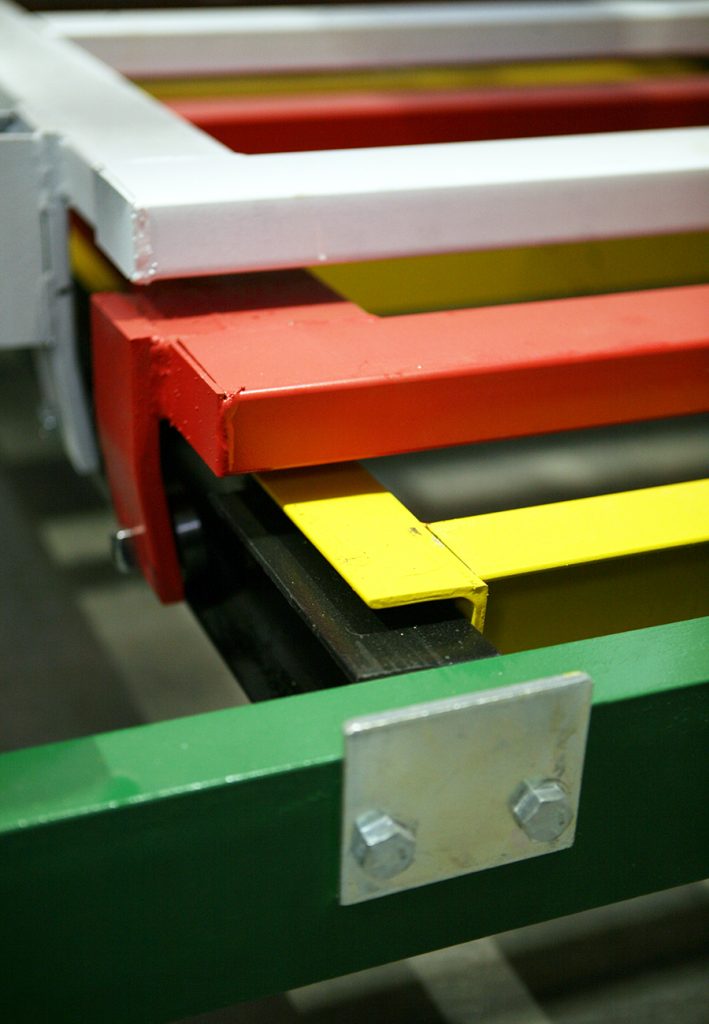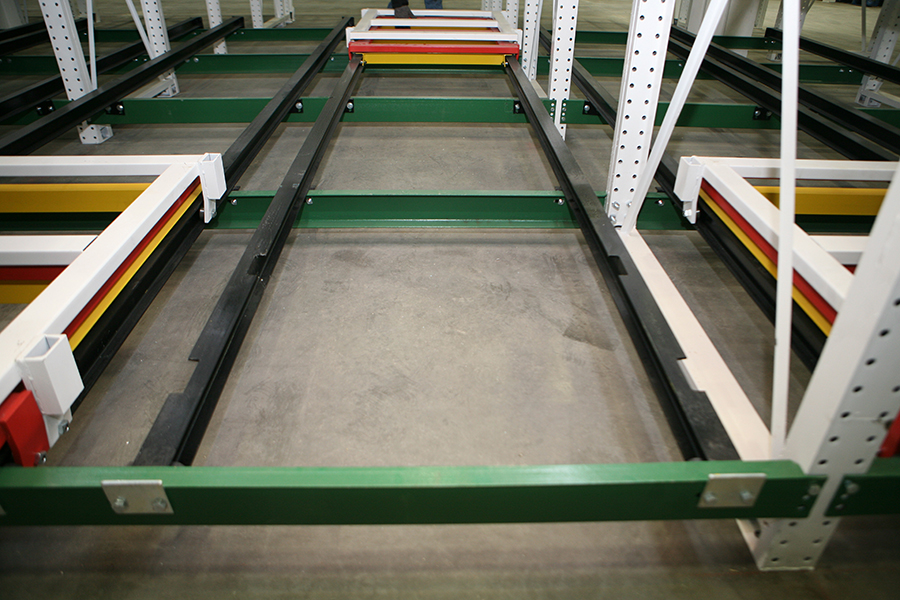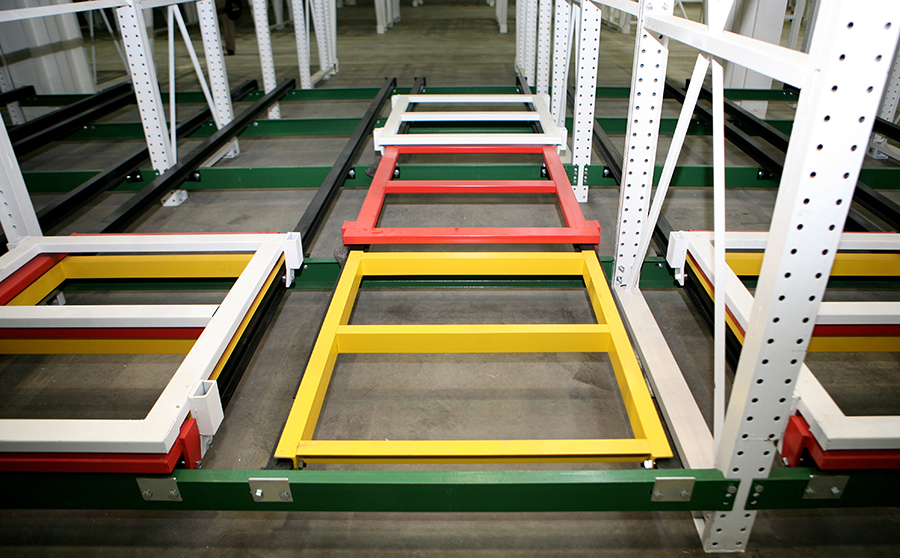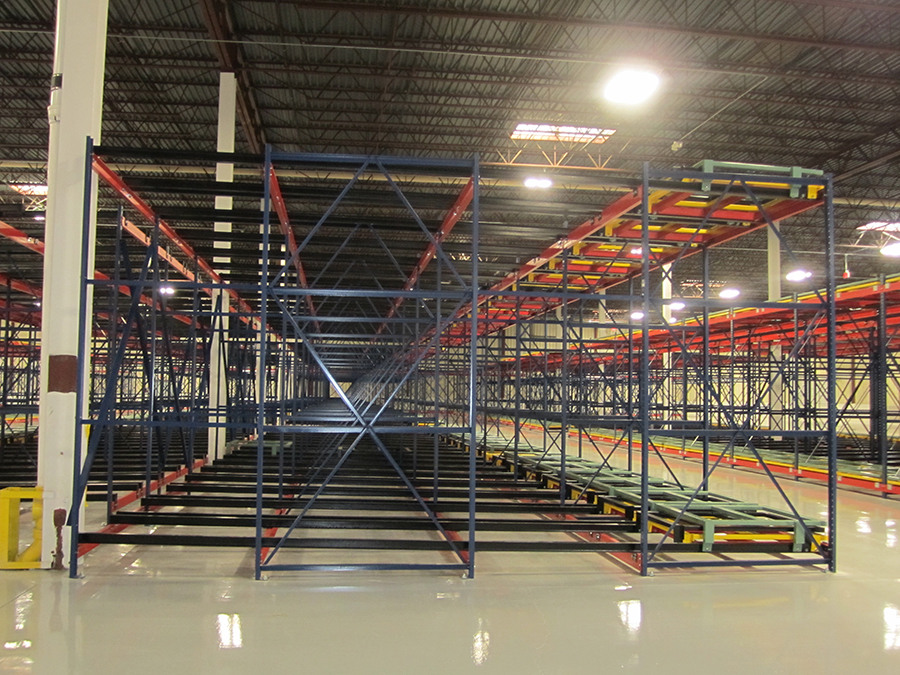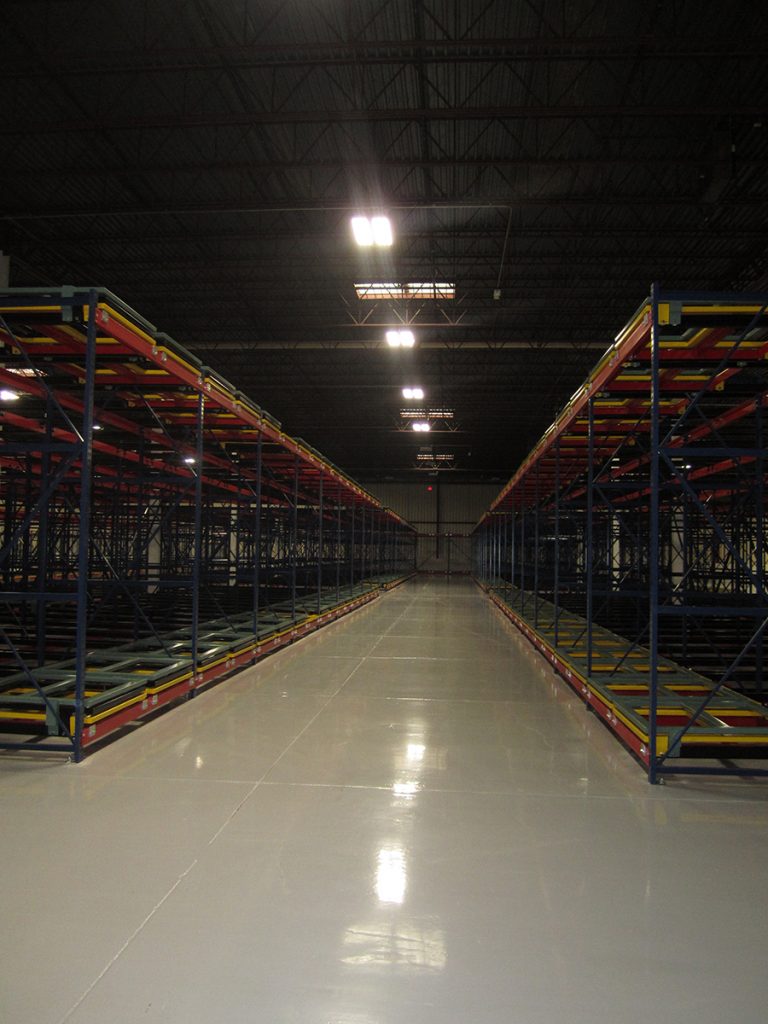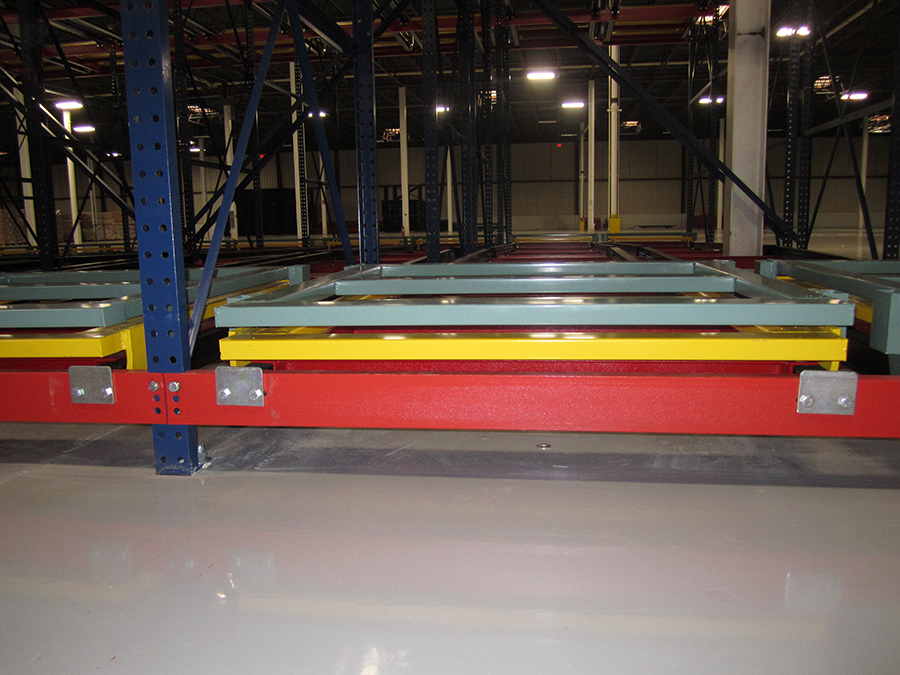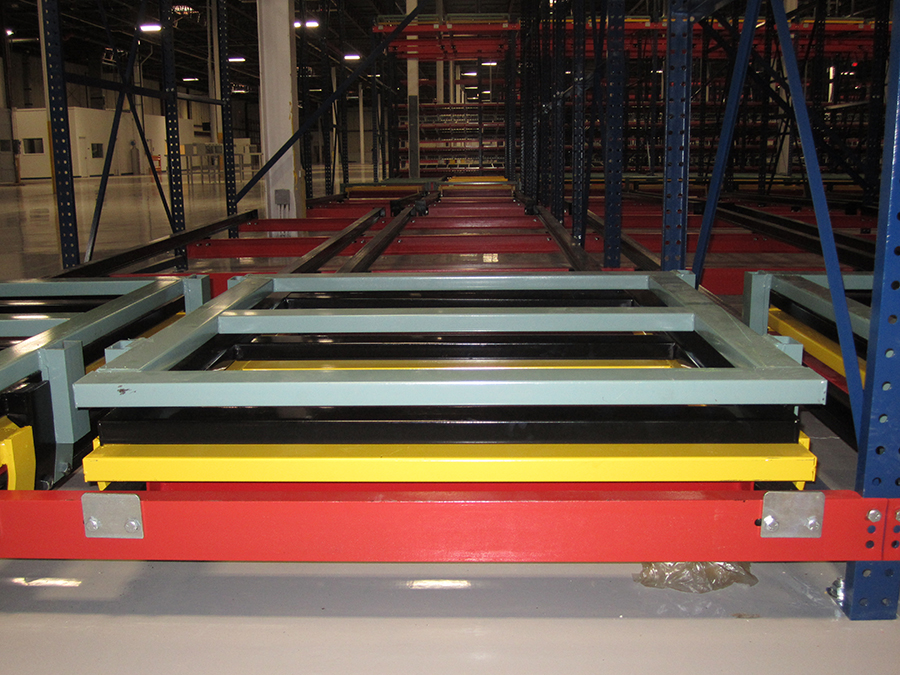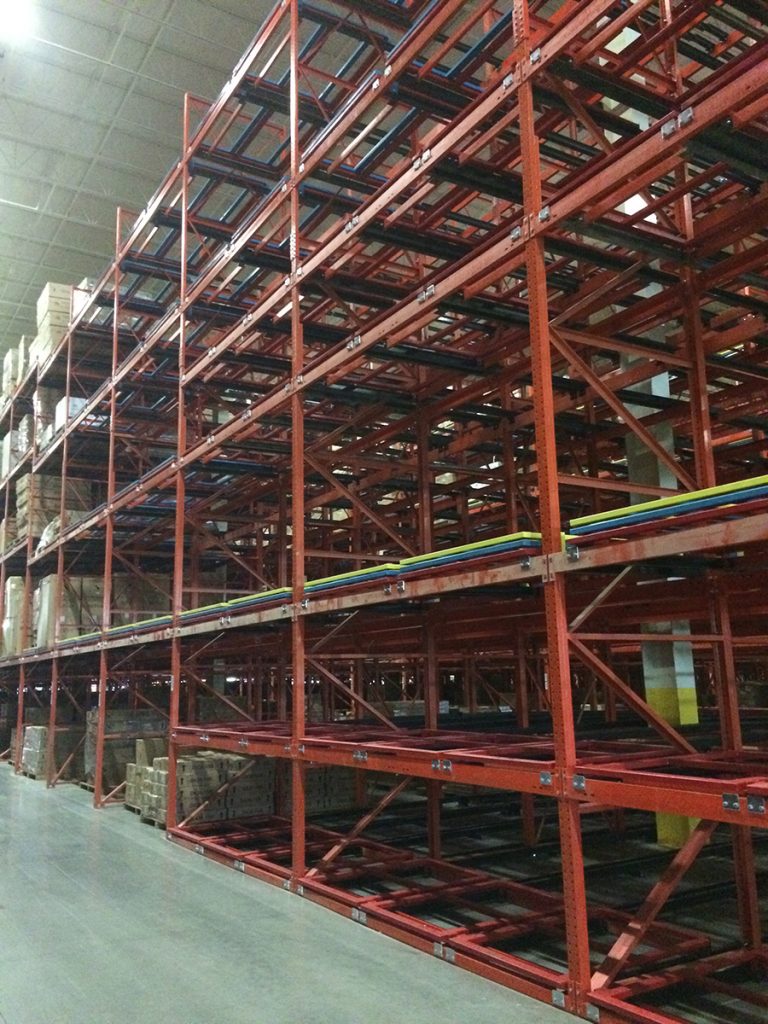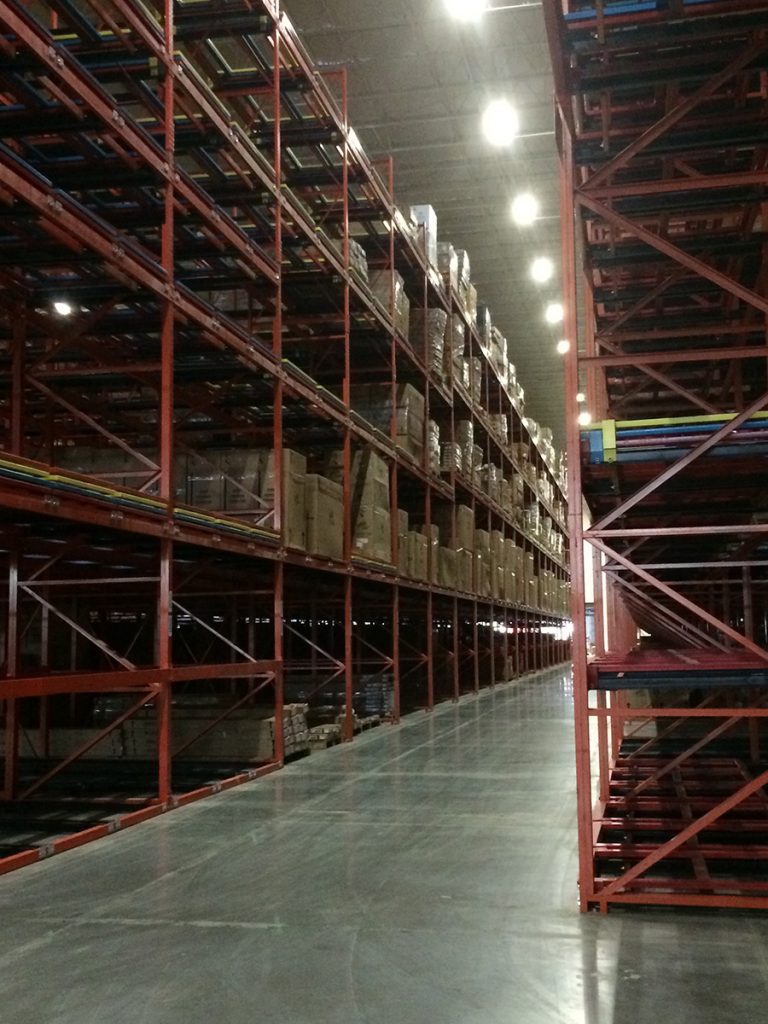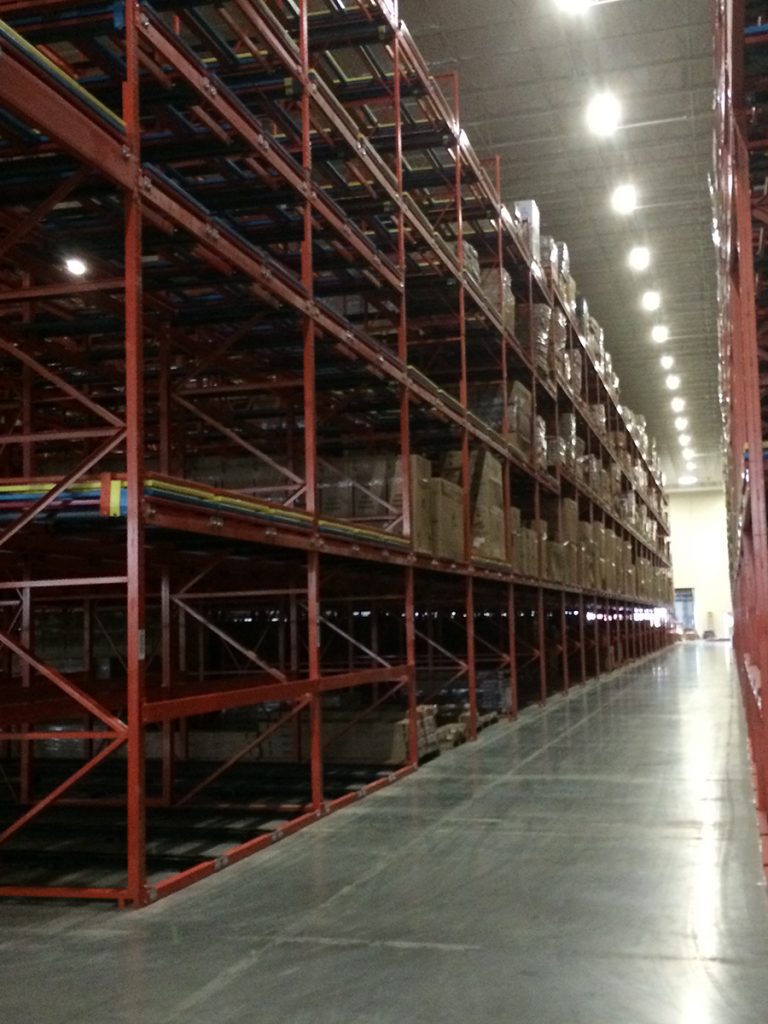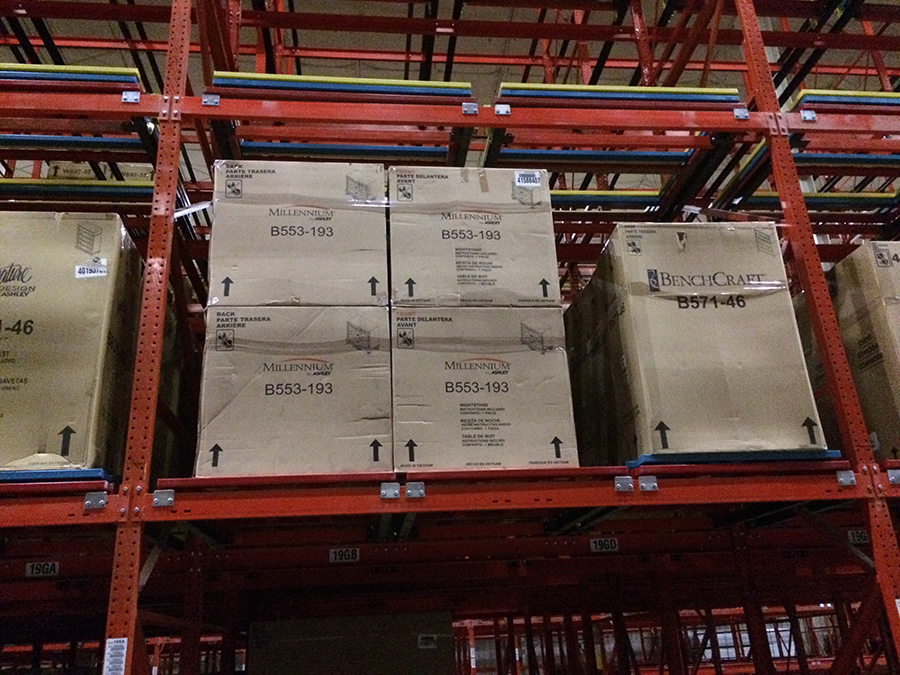In terms of storage density, pushback racking systems are very similar to drive-in/drive-thru systems in that space is utilized in a greater capacity than typical selective pallet rack systems. Where push-back differs from a drive-in rack system lies within the interaction of the fork truck and the pallet racking system itself. RS Material Handling offers pallet rack system depths ranging from 2 to 6 pallets, as well as an industry exclusive 7-deep system.
For drive-in pallet racking fork truck must enter the system’s depth and manually place a pallet into the desired position. The fork truck must then back out, or in the case of drive-thru, ‘drive out’, to exit the system. The placed pallet remains in its initial position until a fork truck repeats the procedure to remove it.
RS Material Handling is a value-added partner and distributor for Rack Builders Inc. (RBI), a respected leader and innovator in the warehouse storage industry.
The advantage of pushback storage rack is that it removes the interaction between the fork truck and the rack system deeper than anything beyond the front set of columns and beams. Push-back rack systems are composed of a series of beams, rails, and carts – these beams are installed to provide a slope that dips ‘down’ in the front of the system. This allows material to move throughout the system by gravity alone. By utilizing rolling carts, the pallet position is always populated in the ‘first’ position – meaning loading push-back pallet racking is essentially the same as selective rack. The telescoping carts “stack” atop one another so that the pallets always shift to allow fork truck operators to rapidly interact with the storage system in the first pallet position. These systems are provided in a multitude of different options, which are explained in more detail below.
